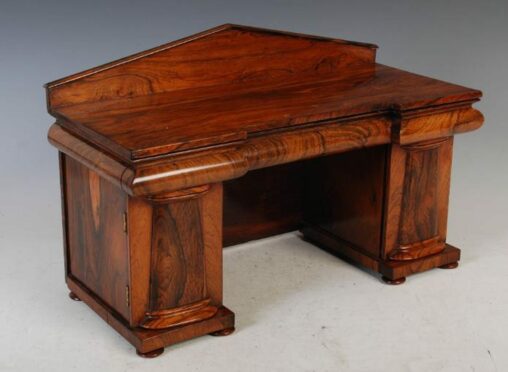Lindsay Burns’ two-day spring sale included a stonking apprentice piece.
It was a rare 19th Century rosewood miniature sideboard of such outstanding quality you might be forgiven for thinking today’s photograph shows a genuine piece of furniture.
I guess the term ‘apprentice piece’ has more than one meaning as we have come to greater appreciate ‘miniature’ objects from bygone days.
Many household items made to a small scale were used by travelling salesmen on their rounds.
Samples in miniature
In Georgian and Victorian times, for example, furniture makers would be able to show what they were capable of manufacturing by the models shown to prospective customers.
A cabinetmaker’s sample was much better than a sketch from a catalogue.
Secondly, some scaled-down items were undoubtedly no more than pieces for children, say for a doll’s house or other nursery uses.
The best apprentice pieces
But the best apprentice pieces were those made by young apprentices to show they had learned the trade and were now capable of the finest craftsmanship.
Such test pieces would be inspected by the owner and the workshop manager, and were expected to be of the highest quality, with intricate inlays and the most difficult joins. Often they were made with fine woods.
The Lindsay Burns sideboard ticked all of these boxes.
Rarer than the real thing
The sideboard was of breakfront form with a chevron back gallery.
The front was fitted with three small frieze drawers.
The pedestal supports had faux pillar doors, opening to reveal fitted drawers with evidence of foil linings, hinting of a possible use as tea caddy drawers.
Highly desirable, and actually rarer than the real thing, the sideboard exceeded pre-sale hopes to take £1450.


